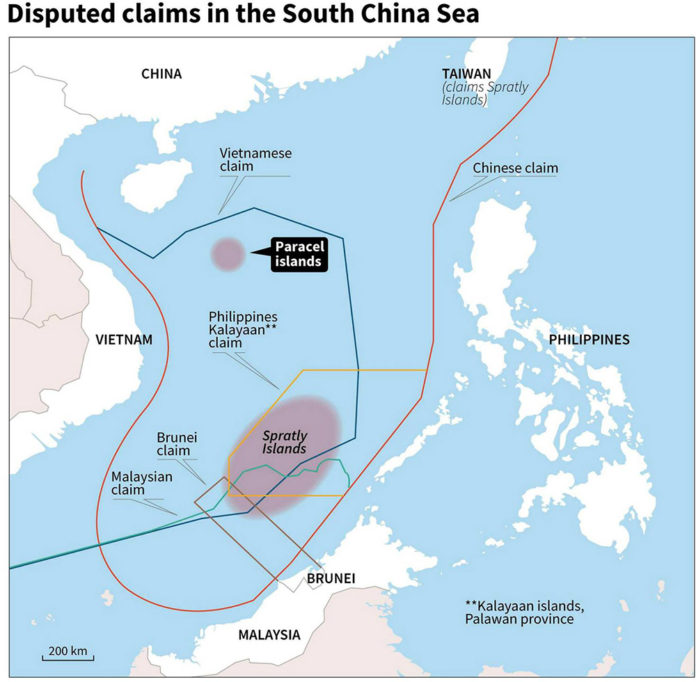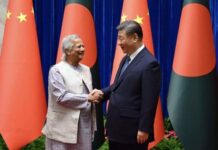Will Quad 2.0 Be More Effective Than 1.0
The US, Japan, Australia and India are the members of the Quadrilateral Security Dialogue (Quad). Starting with the then Japanese prime minister Shinzo Abe in 2007, the group was revived in late 2017 and has since been meeting on a semi-annual basis. As the initial proposal for Quad 1.0 in 2007 could not survive, the question for Quad 2.0, since 2017, has been whether the latter can effectively navigate the region’s uncertain dynamics. During the Quad’s decade-long recess, China aggressively solidified its naval presence in the region and efforts to persuade China to halt its aggression bore no fruit. While there is plenty of room for cooperation within the Quad, the discussion of China’s increasing influence over the South China Sea should take centre stage.
The Quad is not a formal military alliance. The US would like to see it become something like an Asian NATO. As deputy secretary of state Stephen Biegun has said, “Remember even NATO started with relatively modest expectations and a number of countries [initially] chose neutrality over NATO membership.” India has long been hesitant about joining any such military alliance and has even put up some resistance to the idea. When it comes to the South China Sea crisis, it remains unclear just how much heed China will pay to a merely political association of these four powers, given how deeply invested the Chinese Communist Party (CCP) has become in building out the China’s physical footprint in the region. However, because mutual interests among the four powers have increased, while grievances toward China have continued to run ever deeper over the past decade, there are at least two reasons why Quad 2.0 will likely be more effective than Quad 1.0.
First, an even greater convergence of interests between the four members has emerged since the association’s inception. As one of the core examples of the increasing concept of the Indo-Pacific (IP) configuration, which aims to make a “free and open Indo-Pacific,” the Quad seeks to secure the critical sea lanes of communication connecting the two oceans, as a shared objective. Capt (Dr) Gurpreet S. Khurana, who coined the term “Indo-Pacific” in 2007, opined that “free” means no barriers to use of the seas for the prosperity of all states and “open” means “an environment that facilitates sea-going enterprise enabled by inclusiveness of the comity of nations that seek to meet their national ends through the fairness of such enterprise.” Such an integrated strategic vision, which was lacking from Quad 1.0, clearly seems to be driving Quad 2.0.
ALSO READ: INDIA – U.S.: Indo-US Defence Cooperation Enters New Phase
Second, there is currently no comparable alternative means by which these states can deter China’s continued unwelcome advances in the region. In addition, Quad 2.0 reflects the building frustration shared by these states, which emphasize the need for the rule of law in international relations over and against China’s nationalistic and more unilateral approach, which balks at any constraints that might be placed on it under an international rules-based order. As U.S. Indo-Pacific commander Philip Davidson said “an emboldened Communist Party of China seeks to change the world in which Chinese national power is more important than international law.”
The following are examples of grievances by individual states, and their efforts to get redress for their South China Sea disputes with China through reliance on and recourse to international law.
Efforts to restore the rule of law attempted by the Philippines ended in a victory on paper but a failure in practice in 2016. When the Permanent Court of Arbitration (PCA) ruled unanimously, by a vote of 16–0, that there were no legal ground for China to assert that the disputed area is its own based on historical rights, China refused to abide by the ruling.
The US has conducted Freedom of Navigation Operations (FONOPs) in the area, yet Chinese behavior in the region in these disputed waters remains unchanged. Rather, China’s land-reclamation and installation-building projects, along with other “legitimacy-building” efforts around small maritime features, such as sending patrol boats to the area regularly, along with other low-level provocations at sea, continue apace. US frustration has been palpable. Furthermore, China has pursued its own strategy of FONOPs, not only in the South China Sea, but more broadly in the region.
With respect to Australia, China sent a reconnaissance ship near the coast of Queensland to monitor U.S.-Australia naval exercises in July 2017. One of the Chinese major news outlets, the Global Times, reported that while the Australian Ministry of Defence stated that Australia “respects the right of all countries to navigate freely in international waters,” Australian media nevertheless displayed a fierce attitude, declaring that the behavior of the Chinese ship was “provocative” and “worrying.” But the Chinese newspaper went on to say that what was important was for China “to give both parties [the U.S. and Australia] more insights into understanding FONOPs. Australians learn more about the seriousness of the South China Sea issue and understand the Chinese concern [surrounding FONOPs].” This incident shows how China’s view of the scope for their FONOPs goes beyond Southeast Asia, and that sending a strong message to Australia on this matter was strategically important.
Similarly, a PLA Navy reconnaissance vessel entered Japanese territorial waters on 15 June 2016 for about one hour and thirty minutes. This marked the first such incursion since 2004, when a Chinese nuclear submarine did likewise. China’s Ministry of Defense Information Bureau said that the action was “in compliance with freedom of navigation from the United Nations Convention on the Law of the Sea.” However, Japan’s national broadcasting organization, Nippon HōsōKyōkai (NHK), interpreted this action as being designed to prevent Japan from getting involved with the ongoing South China Sea territorial and navigational freedom disputes. Another Japanese newspaper, Yomiuri Shimbun, described the affair as a “Chinese version of freedom of navigation,” and argued that the reason for China taking such action was that Japan, the U.S. and other states were targeting China for constructing artificial islands in the South China Sea and that China saw this as its rivals attempting to erect a string of maritime siege towers around China, thereby making China insecure.
ALSO READ: India holds naval exercise with Japan amid stand-off with China
While Britain is not a member of the Quad, China’s warning to other states that might engage in hampering the building up of China’s “own legitimacy in the South China Sea” has continued. On 3 June 2018, France and Britain’s defence ministries reported that they would send warships to sail through the South China Sea to challenge China’s excessive claims on the region. On 5 June, the Chinese military’s TV network, First Military Intelligence, issued a warning, stating: “China will use British warships as a model to let them taste frustration.” The network further stated that the British case was like “kill[ing] a chicken to give a lesson to monkeys.” (Shājījǐnghóu). In other words, Britain should be made an example of, in order to scare other countries, so that it dare not follow in the footsteps of the “chicken.”
Such Chinese behavior, which has frustrated states that understand the importance of the rule of the law and freedom of navigation in the South China Sea, generates hopeful that the role of the Quad this time around should have a greater chance of success than did the Quad 1.0.
The question remains, then: What about enlarging the Quad’s membership? Bringing in more states from around the region would means both more soft and more hard power. But would smaller nations be willing to join? On the possibility of having a Quad-plus dialogue, Biegun said on 31 August 2020, it might include South Korea, Vietnam and New Zealand. In addition, U.S. secretary of state Mike Pompeo mentioned on 1 September 2020 that, “in addition to India, Australia and Japan, Korea will become a partner of the United States.” South Korean foreign minister Kang Kyunghwa played down the idea and denied that there had been any formal request from the U.S. to join it or talk about it.”
As the South Korean case reveals, states would prefer to be able to avoid being forced into making a hard binary choice between aligning themselves solely with the U.S. or China. However, in general, these potential “plus” states share the common objective of support for the rule of law and a free and open Indo-Pacific region. Furthermore, since South Korea and New Zealand are already formal military allies of the United States, and since both already have a shared interest in what the Quad is aiming for, if Quad 2.0 can establish unity among its core four members, it can have a brighter future than its previous iteration.


















